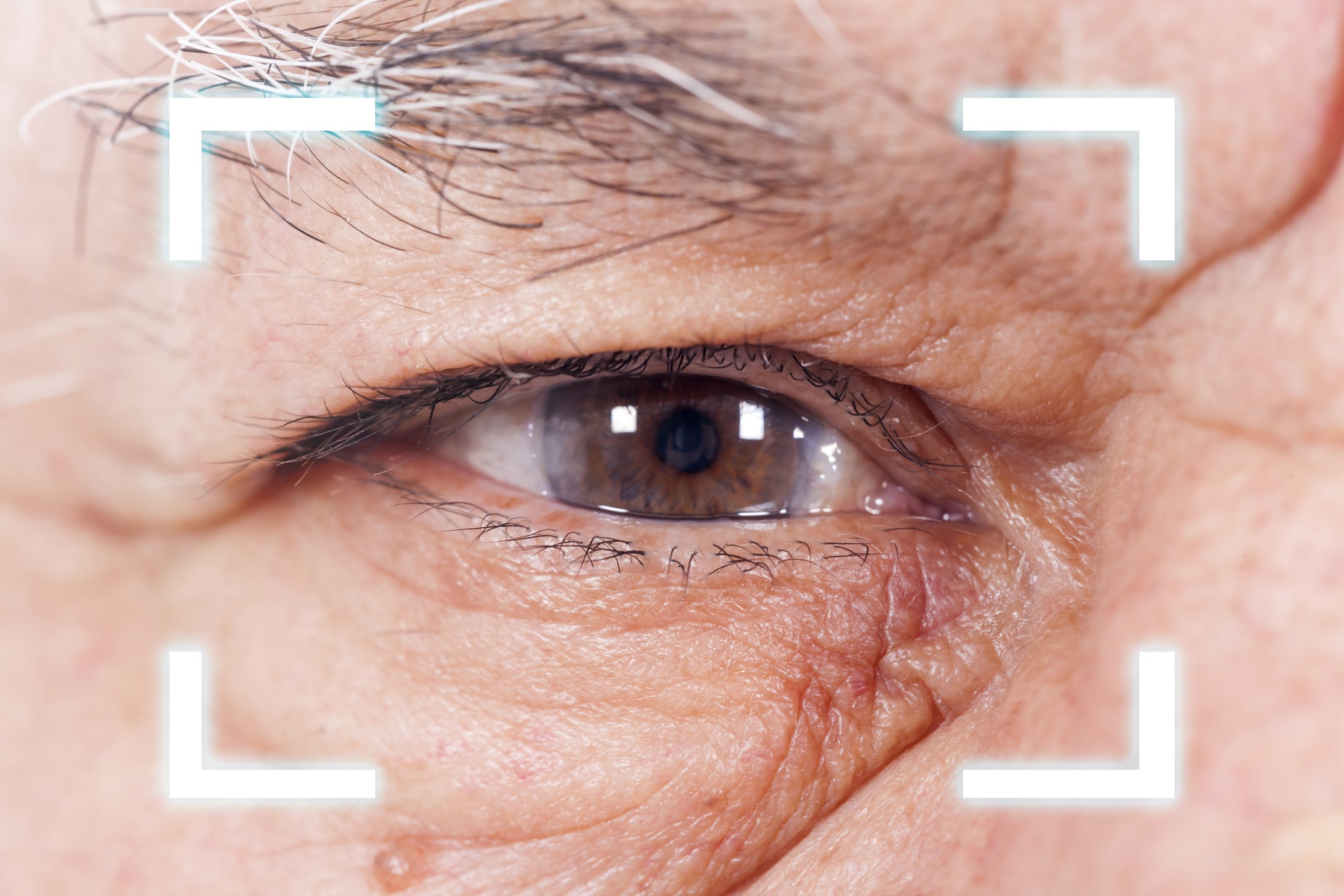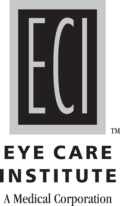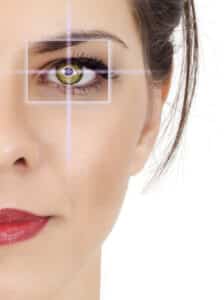About YAG Laser
The wonderful thing about laser cataract surgery is that it is actually a “cure”; the original cataract never comes back.
However, following surgery, some patients can develop a “secondary cataract”, haziness of the posterior capsule of the original lens. Years ago, patients would need to go back to the Operating Room to have a tiny surgical opening made in this “secondary cataract”.

Today, patients can easily and safely be treated using a laser to create the opening. This procedure restores optimal vision to patients with minimal inconvenience and no pain. Most patients notice an immediate improvement as soon as their pupils, which have been dilated, return to their regular size.
This fairly non-invasive procedure, known either as a YAG Laser, or a Laser Posterior, Capsulotomy, can be a simple and fast option to clear up any cloudiness. It can take less than five minutes and requires no anesthesia.
Did You Know?
YAG is short for a special laser, composed of a synthetic crystal-like material called Yttrium Aluminum Garnet, used in the YAG laser procedure
YAG Laser Capsulotomy
Cataract surgery is one of the most successful surgeries in all of medicine. The cataract-clouded natural lens is removed and replaced with an artificial intraocular lens. This gives the patient crystal clear vision for the rest of his or her life. Occasionally, the lens membrane into which the IOL is placed thickens and clouds, affecting the patient’s vision quality.
We can easily correct this problem by using a YAG laser in a procedure called a YAG laser capsulotomy at the Eye Care Institute.
What is a YAG laser capsulotomy?
After the clouded natural lens is removed in cataract surgery, it is replaced by an intraocular lens. This lens is placed inside the lens membrane, which is also called the bag or capsule. In most cases, this is the end of the story and the patient enjoys a great clear vision.
But in a small number of patients, the capsule thickens after the cataract surgery and it becomes cloudy. The clouded capsule now interferes with the light reaching the back of the eye. Now the patient’s vision becomes misty, and it can create glare from bright lights.
This thickening of the capsule typically occurs about two years after the patient’s cataract surgery. Having a YAG laser capsulotomy is the only way to treat this problem. In a YAG laser capsulotomy, your Eye Care Institute doctor uses a special lens to apply laser energy to the thickened, clouded capsule. This energy creates a small hole in the center of the capsule, which lets light through. This makes the patient’s vision clear again.
Who is an ideal candidate for a YAG laser capsulotomy?
After cataract surgery, the cataract will never come back because the clouded lens has been removed. But there is about a 50/50 chance that a protein film will form across the posterior capsule that is holding the IOL. This is caused by residual protein material that is generated by microscopic cells that stayed on the anterior capsule.
If you’re one of the roughly 50 percent of patients where the proteins migrate across to the posterior capsule, clouding it, then you are the perfect candidate for a laser capsulotomy. This is called posterior capsule opacification, and it usually takes a year or two to begin blurring the vision.
What are the benefits of having a YAG laser capsulotomy?
These very brief surgeries create a small hole in the clouded capsule, which then lets light through clearly. Now the patient will have the same crystal clear, unclouded vision he or she had immediately after their cataract procedure.
What’s the difference between a YAG capsulotomy and the original laser cataract surgery?
The procedures are completely different. In cataract surgery, the outer capsule is cut and the cataract-clouded lens is broken up and removed. Then an artificial intraocular lens is inserted to replace the removed natural lens. The outer capsule then heals on its own and the IOL is there for good.
A YAG capsulotomy only seeks to use the laser energy to make small holes in the clouded posterior capsule to clear the vision. Nothing is removed or replaced.
How is a YAG laser capsulotomy done?
These brief procedures are done right in our Eye Care Institute offices. We first dilate your eye to make the pupil big, and then we apply an anesthetic eye drop to numb the surface of your eye. You sit at the YAG machine and place your chin in a cup with your forehead against a rest. This keeps your head still.
Your Eye Care Institute doctor then places a special mirrored lens on your eye before applying the YAG laser energy. This lens allows our doctors to view the membrane clearly so we can apply the laser beam and create a small hole to clear your vision.
The procedure is painless. It doesn’t matter if you blink during the procedure, as the laser only affects the tissue that it is focused on, so it doesn’t harm your eyelid or other structures. This means there is no reason for a lid-holding device to be used in these capsulotomies.
How long does a YAG laser capsulotomy take?
These procedures take just 5 minutes, believe it or not. Your Eye Care Institute doctor applies the pulses of laser energy to the clouded capsule and this creates the necessary holes.
How long will the results from my YAG laser capsulotomy last?
These procedures typically only need to be done once in an eye. The hole created in the capsule will not close, so the vision will remain clear.
What is recovery like after a laser capsulotomy?
There isn’t any recovery necessary. You may notice that your vision is a bit blurry for a few hours; this is because your eye was dilated. Because of this, you’ll need someone to drive you home. You may notice a few new floaters in your field of vision, but they should decrease over time. Otherwise, you can get right back to your normal activities without any delay.
Are There Any Risks to the Yag Laser?
The Yag laser is a safe and effective treatment for haziness or cloudiness that develops secondary to cataract surgery. This non-invasive treatment is much less complicated than previous laser treatments, so the risk of disruptions is minimal.
As with any procedure, it’s important to consider potential damage to the intraocular lens or retina, but you can rest assured we will walk you through the entire procedure during your consultation and answer any questions you may have.
How Do I Prepare for a Yag Laser Appointment?
The Yag laser is a simple procedure that does not require any advanced preparation. However, the procedure does require the use of dilating drops, so we do not recommend patients plan to drive themselves home after surgery.
If you are planning to drive to your appointment, we recommend arranging transportation with a friend or family member so you don’t have to worry about getting home once we’ve completed your procedure.
Can I Combine the Yag Laser with Other Procedures?
For most patients, we typically do not recommend combining the Yag laser with other procedures. However, if there is another procedure you’re interested in, we can answer any questions you may have about combining the two and make a personalized recommendation during your consultation.
Will I Need Yag Laser Treatment Again in the Future?
Your Yag laser treatment is designed to be performed only once, so you will not need to worry about scheduling follow-up or maintenance procedures in the future. Once the laser has created the hole in the targeted capsule, your cloudiness should resolve itself and is unlikely to recur in the future.
In the weeks following your procedure, you may notice floaters in your vision, but this is normal. We will provide you with specific recovery and aftercare instructions so you know exactly what changes in your vision to expect and what the normal recovery process should be like.
Can I Use Eye Drops After Yag Laser Treatment?
There are not any major restrictions you need to adhere to following your Yag laser treatment, so you can expect to return to your normal physical activities as soon as you feel ready.
Eye drops can be a helpful part of your healing process, as they keep your eyes comfortable after your treatment. We may even give you a prescription for anti-inflammatory eye drops if we determine you could benefit from them.
After your procedure, we will advise you on which type of eye drops are safe to use, in addition to how often and how long you may need to use them.
Schedule Your Consultation Today
If you're interested in learning more about laser capsulotomy please contact us for a consultation at 707.546.9800 or fill out our contact us form. We will discuss your needs and concerns, and determine your best course of action.


